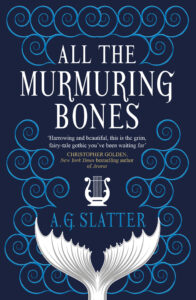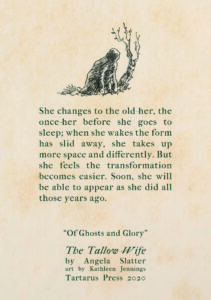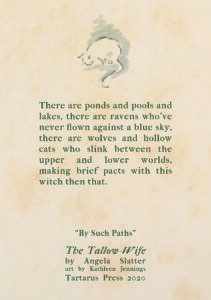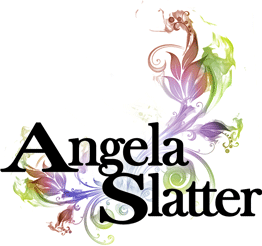 In theory, if all goes according to plan, The Tallow-Wife and Other Tales will be published in February this year. I say “in theory” not because of a lack of faith, but because of the bruising experiences of 2020, when nothing went as planned, expected, or varied in any reasonable fashion from the projected path. 2020: Defying Physics and Everything Else.
In theory, if all goes according to plan, The Tallow-Wife and Other Tales will be published in February this year. I say “in theory” not because of a lack of faith, but because of the bruising experiences of 2020, when nothing went as planned, expected, or varied in any reasonable fashion from the projected path. 2020: Defying Physics and Everything Else.
But I digress.
The Tallow-Wife and Other Tales took me a horribly long time to write (started in 2013/14) as my Queensland Writers’ Fellowship project – thanks for your patience. It finishes off a lot of the arcs that have stretched over Sourdough (Tartarus Press) and Bitterwood (Tartarus Press) and the novella Of Sorrow and Such (Tor.com). It’s not the entire end, but it’s the end for some characters I’ve loved (and tortured) ever since 2010. It also spills over into the forthcoming novel All the Murmuring Bones (from Titan in March this year, under the name A.G. Slatter – and NOT YA, but can be read by YA readers). 
What was my point? I know I had one …
Oh yes.
So, to celebrate, Brain Jar Press will be bringing out a little free chapbook treat in the form of “No Good Deed” in the coming weeks – that’s kind of an origin story for the family of Cordelia and Bethany Lawrence who are the mainstays of The Tallow-Wife (and there’s also a detailed Sourdough Chronology in there). (And that is a very long sentence.)
Also, you might want to go back and read everything from the beginning (in this order) to remind yourself of the bajillion characters: Bitterwood, Of Sorrow and Such, then Sourdough, then The Tallow-Wife, then All the Murmuring Bones.
Aaaaaand here is Dr Helen Marshall’s gorgeous “Introduction” to The Tallow-Wife and Other Tales, just as another treat. I’m terribly fond of it.
When there’s a pre-order page I will let you know.
 Introduction
Introduction
By Helen Marshall
“Once upon a time on the far side of yesterday, in a land that never was, in a time that could never be, there lived girls who chose their own fate …”
So begins a story told by a spirit. The story will send Victoria Parsifal, the girl known to her clientele as the Nightingale, to the place of dreaming, the only place (it seems) she might truly be free.
Is the story true? Will it be enough to save her?
Like all good stories, the thread of this one—its truth—goes deeper than a single recitation. It repeats and recurs, flashing in and out of sight, woven deep into the fabric of this collection. What does it mean for a girl to choose her own fate?
Venture into the wondrous reaches of Lodellan, with its fine houses and cathedrals, its traveling shows, its solstice balls, its promises and its curses. Here, you will find a thousand dazzling sights, a tapestry of colour and strangeness—or rather a patchwork quilt, the kind worked on lovingly, the secrets of its patterns passed down from generation to generation. But look closer. There, below the glittering false front, you will find the dark thread knotted to the gold.
Trapped women. Women bound in marriage, bound in love, bound in service.
These witches and streetwalkers, songsters, holy women, heisters, wayfarers, child-bearers, child-thieves, murderers and matrons are cut from the oldest, richest cloth: dyed in heart’s blood, red with the pain of their making. Lis the innkeeper of The Silver Branch, who nurses an ill-fated love while she bides her time, waiting for redemption. Cordelia Parsifal, a mother who will learn from the tallow-wife the darkness at the heart of her path. Her sister Bethany Lawrence, she of the feral face, a woman well-versed in the binding of desire. For all their constrictions, are they truly powerless? Hardly.
The best fairy tales teach us lessons worth learning. That transformation means nothing if it is only skin-deep. That getting what you want is often more bitter than sweet. That hunger can drive you to terrible ends. If anything, the power of these stories comes from their insistence that even in the most desperate of positions, you can still make a choice. As long as you are willing to bear the cost of it.
And this is an age where such lessons are essential. Fantasy has always been a subversive kind of writing, one part warning, one part consolation. It reminds us that life is full of hardship and that its rewards are often priced in blood. Yet there can be beauty in it as well, like the rose whose thorn pricks the tender flesh that reaches for it. Try as some might to sanitise and soften this message, still it is passed down from every wise mother to every wise child. These are stories of resistance. These are stories of retaliation. 
Behind every good fairy tale is the taleteller herself. Fear not: Angela Slatter is one of the best. She has woven the stories of Lodellan and its extraordinary inhabitants in two previous collections, Sourdough and Other Stories and The Bitterwood Bible and Other Recountings and one novella, Of Sorrow and Such, together winning the World Fantasy Award and the Ditmar Award which recognizes achievement in Australian science fiction. She draws her inspiration from folktales and myths, ecclesiastical history, legend. Like a magpie, she finds the glimmering nugget worth carrying over. Her stories have a surprising tenderness to them despite the dark places they venture.
Although Lodellan may lie on the far side of yesterday, a land that never was, in reading this book you may just discover something true about the world. And if you’re lucky—if you’re patient and wise and fair and fierce—maybe it will be enough to set you free.

